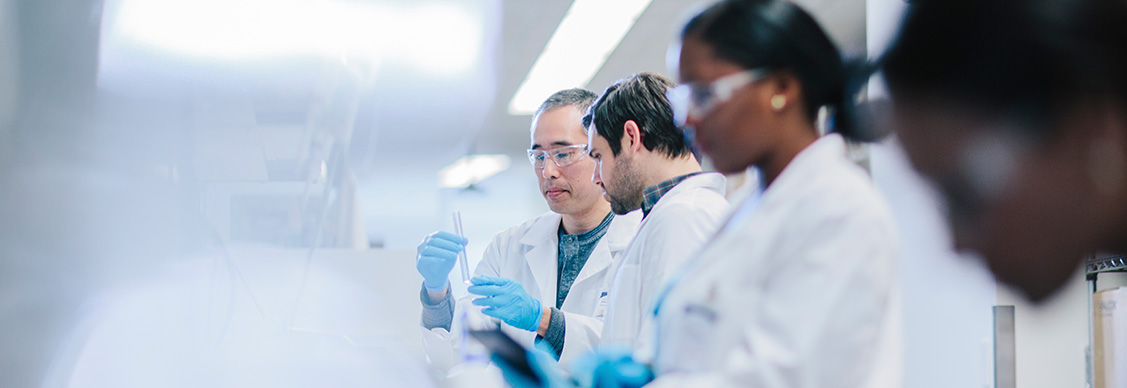The hunt for the next big life-sciences city
The race is on for early-mover advantage in smaller U.S. markets
Texas Medical Center in Houston is the largest medical center in the world. The city and its suburbs have more than 1,760 life-sciences companies calling it home and is renowned for its industry-leading expertise in cell and gene therapy.
Still, Houston doesn’t rank in the top 10 of cities in the U.S. where life sciences are booming, based on three key factors: access to talent, funding that leads to commercialization, and real estate infrastructure to support further growth, according to JLL’s recent 2022 Life Sciences Research Outlook. Why?
“It’s pretty simple,” says JLL Senior Research Director Amber Schiada. “Houston has historically been undersupplied in terms of purpose-built lab space, which is critical for companies to scale operations. Markets without the proper facilities to support growth will be less attractive to companies looking to scale quickly. But what comes first, the chicken or the egg – or in commercial real estate terms, the development or the demand?”
An influx of developer activity in Houston is changing that narrative.
When analyzing the 34 cluster cities highlighted in JLL’s 2022 report, middle-of-the-pack markets like Houston, Minneapolis-St. Paul and Pittsburgh all had one thing in common: their commercial real estate growth potential puts them at an excellent advantage for scaling the industry, according to Schiada. Considering the ability to support future growth alone, all three cities break the top 10.
The Ability to scale
As the life sciences industry continues to grow, so does the need for space. This has pushed developers to adopt innovative solutions to keep up with demand. From mixing R&D lab space and advanced manufacturing facilities in one building, having room to set up operations and grow in place is a significant draw for many startups.
Looking for more insights? Never miss an update.
The latest news, insights and opportunities from global commercial real estate markets straight to your inbox.
“Looking at what cities will be future life sciences hubs, the ability to scale weighs heavily on their success,” Schiada says. “But it is not the only piece of the puzzle. “Innovation communities take decades to evolve. So, a community eager to invest in the industry is key. Look at top-tier markets like Boston and San Diego, and you will see decades of investment from developers, hospital systems, and public and private partnerships.”
Looking at commercial real estate potential alone, Houston’s rapidly evolving life sciences market jumps from no. 13 to no. 9 on JLL’s cluster ranking map. And while it has such a huge medical center – and university support – a recent flurry of investment from key players, sets the tone for massive growth in the market.
Projects such as Hines’ Levit Green, Texas Medical Center’s TMC3, and Alexandria (in the Woodlands) will deliver more than 1 million square feet of top-tier lab and research space to the market.
“There is a really interesting paradigm going on with these new projects,” says Sarah Savage, a Vice President at JLL Houston’s Healthcare, Life Sciences, and Higher Education Team. “We are already seeing them set the high watermark for rental rates in the region to about $60 to $65 per square foot (base rate).
For Houston, that is an 85% jump in lease rates compared to the last purpose-built life sciences plaza.
“But even compared to Boston, which is seeing about $98 per square foot overall, and up to $140 per square foot in core submarkets, the lower cost is a major draw for larger companies as well,” Savage says.
Savage says that a unique part of the story is that due to increased demand in the market, they are seeing clients considering all options, from top-tier properties such as Levit Green to lower-tier properties and industrial shells. “You don’t really see this in other sectors,” she says.
Investment Opportunities
Early mover advantage
While researchers are seeing investors refocusing more on resilient top-cluster markets, being an early mover in smaller markets can be a real strategy for companies looking to scale biotech.
Houston is a great example of a region benefiting from the early mover advantage, Schiada says, pointing to Levit Green announcing its first anchor tenant at Levit Green. Sino Biological, Inc., an international reagent supplier and service provider, has leased approximately 10,000 square feet of commercial lab and office space in Levit Green’s first phase.
Plenty of room to grow in place, lower overall occupancy costs, and plenty of academic resources make clusters outside the nation’s largest metros incredibly attractive, Schiada says.
“But what is also interesting about these emerging markets is that they also tend to have great talent metrics,” Schiada adds. “That is attractive for companies looking to scale in biotech as labor costs are costly, especially in San Francisco and Boston. So, if you can grow your company in places like Houston or Minneapolis, your labor cost will be much lower.
“Companies that want to grow into a new market and save on those costs have a real opportunity to be dominant players who catalyze these up-and-coming regions.”
Contact Amber Schiada
JLL Senior Research DirectorWhat’s your investment ambition?
Uncover opportunities and capital sources all over the world and discover how we can help you achieve your investment goals.




